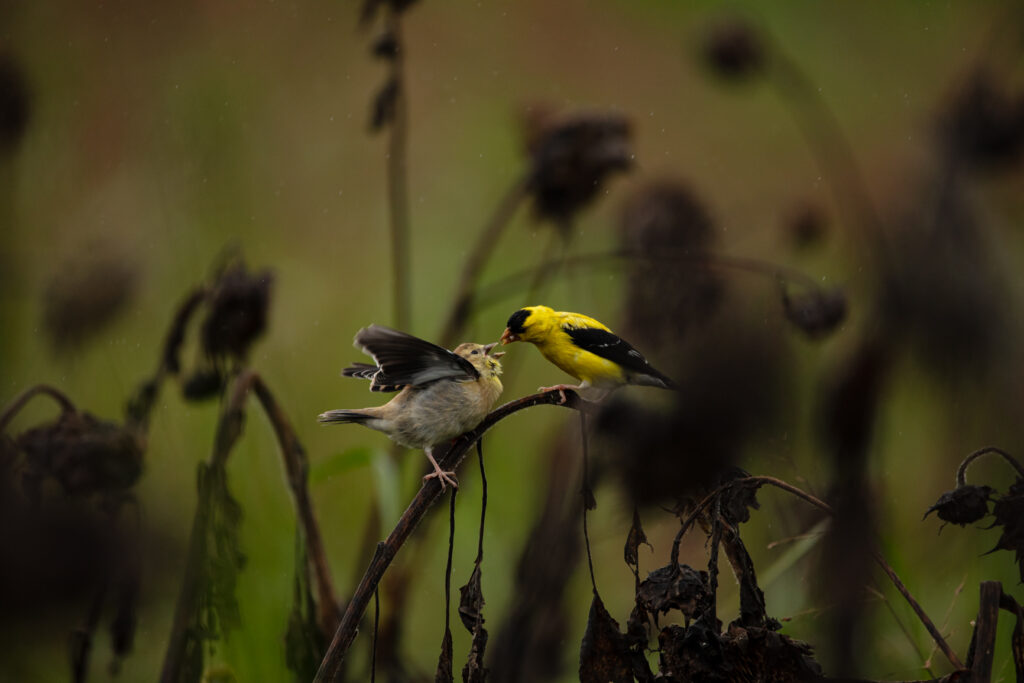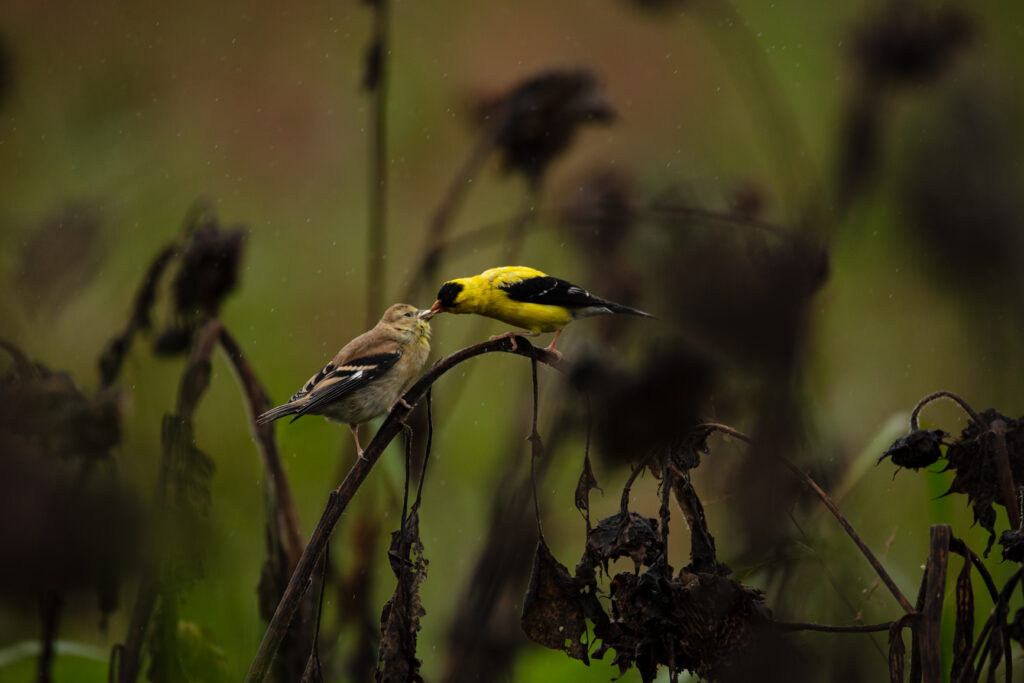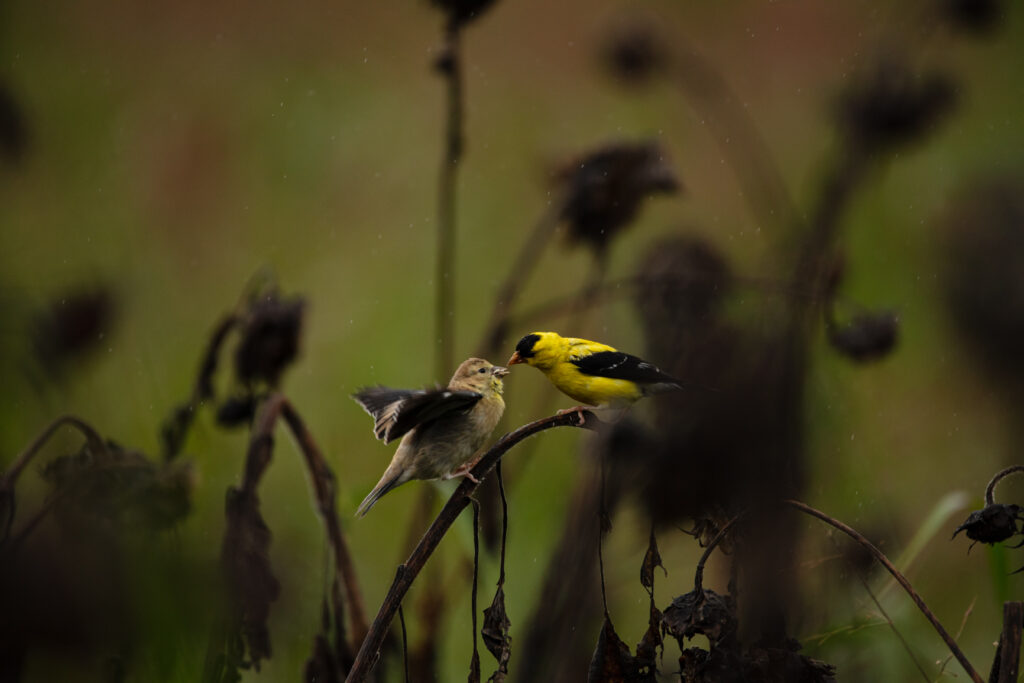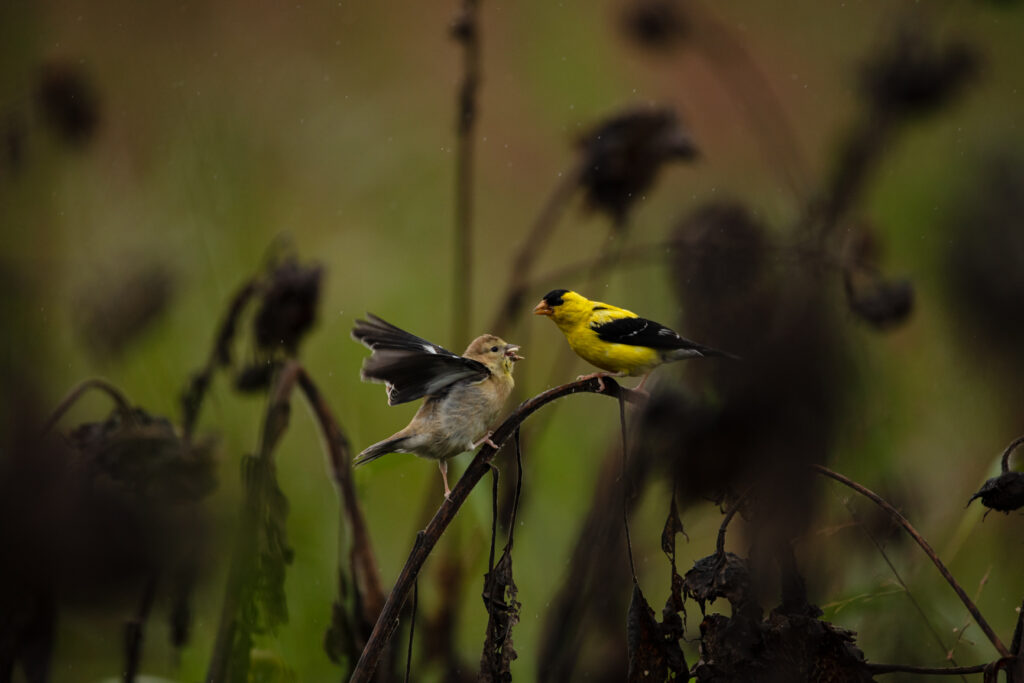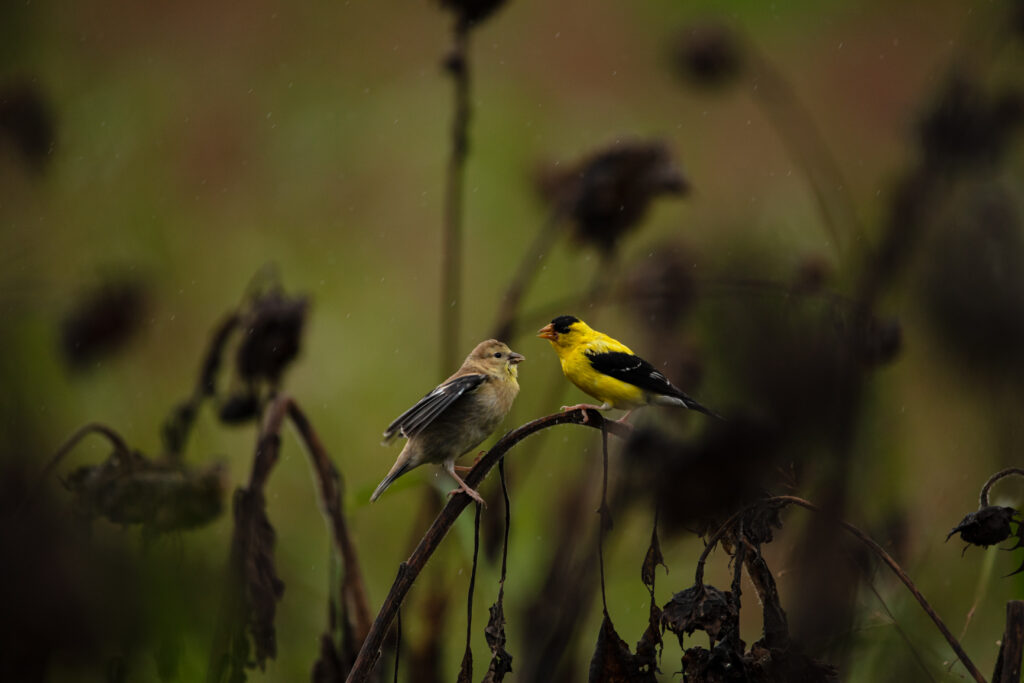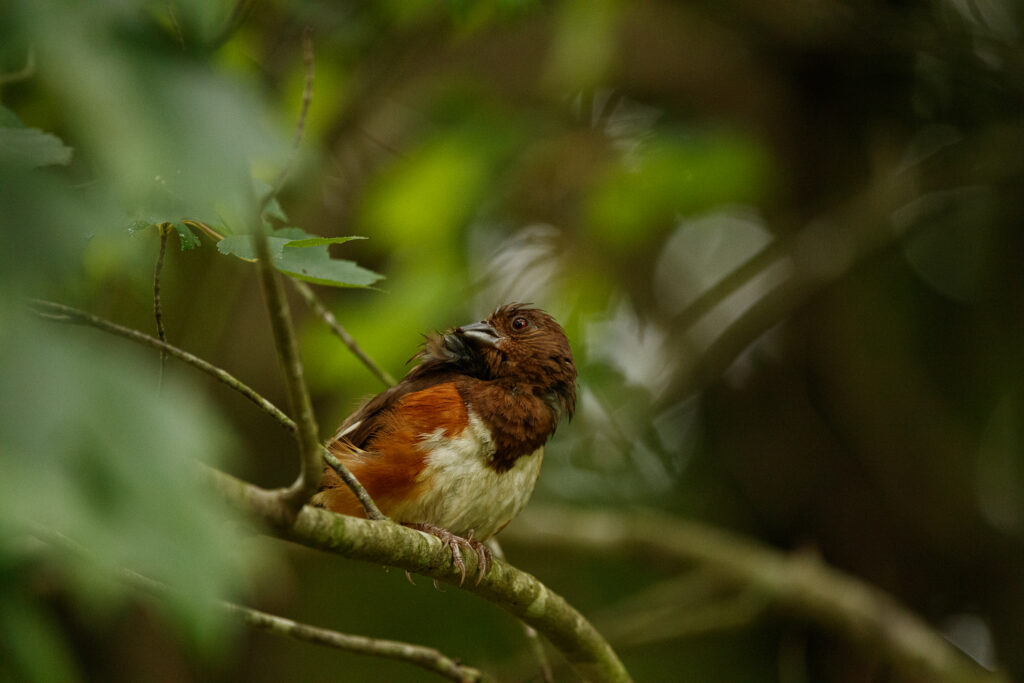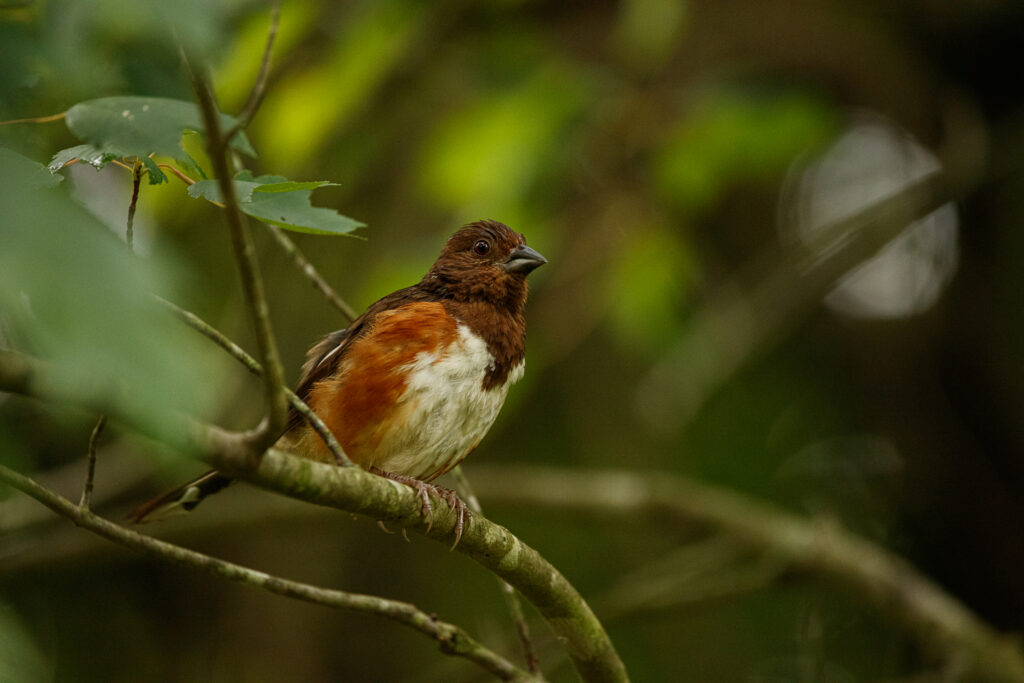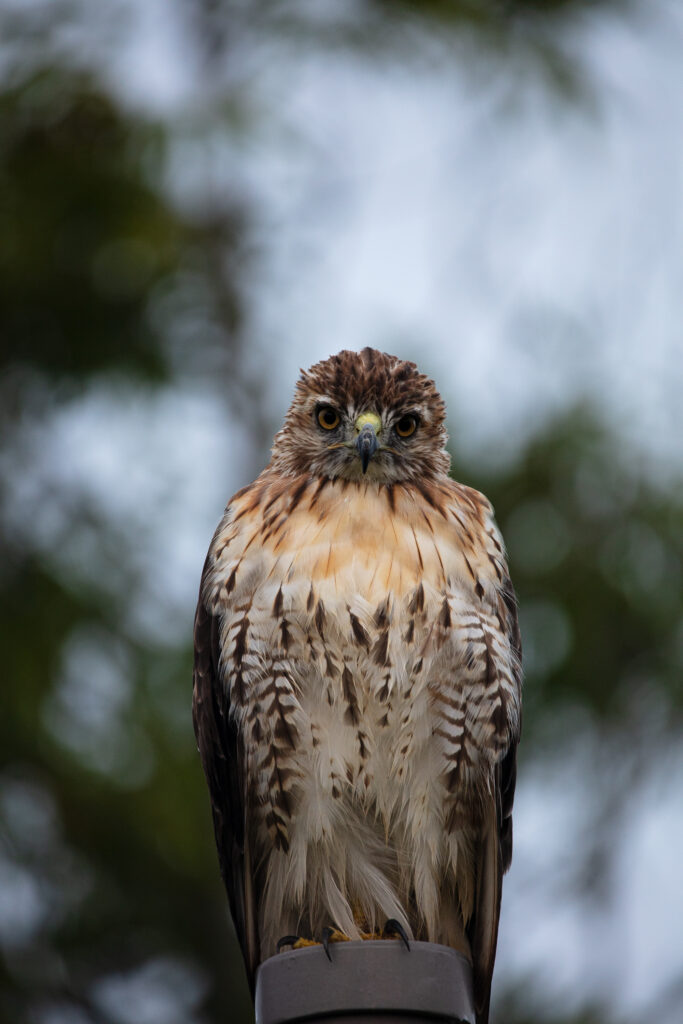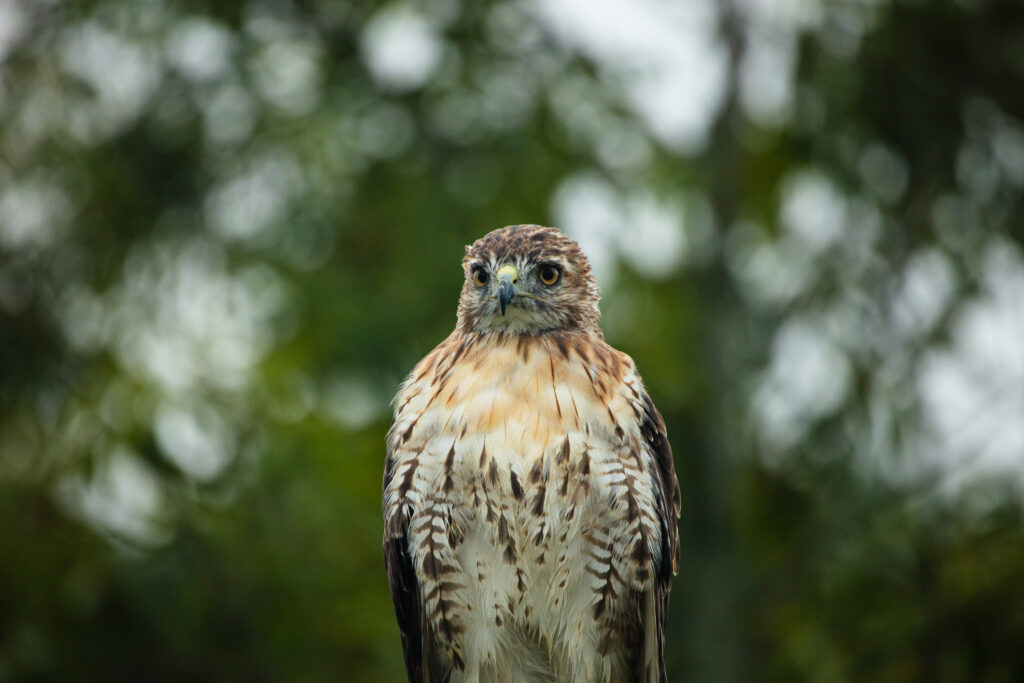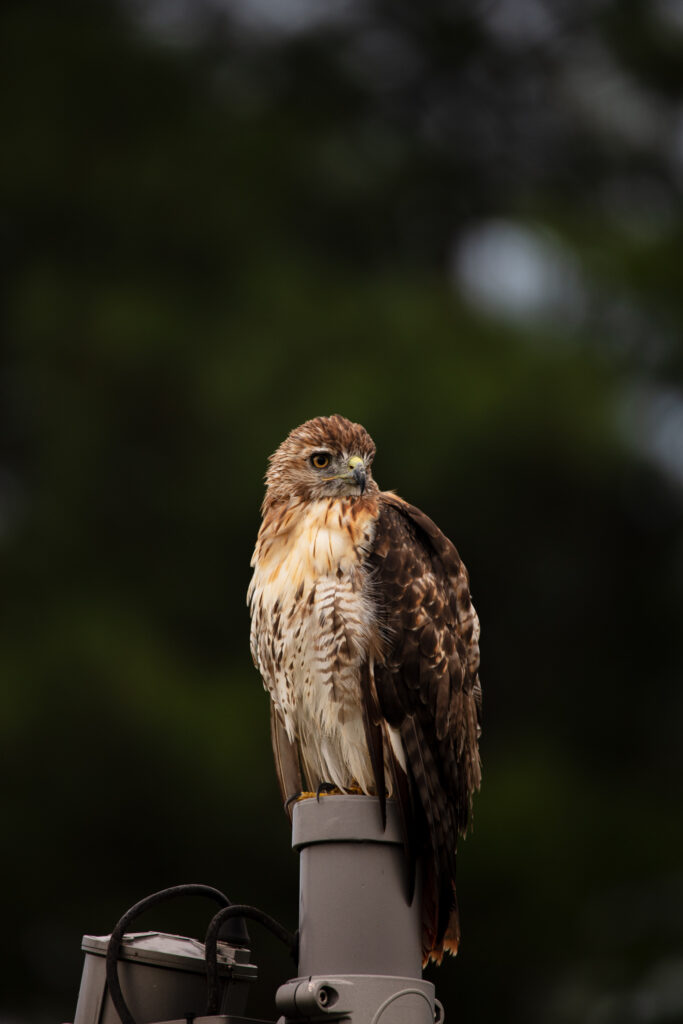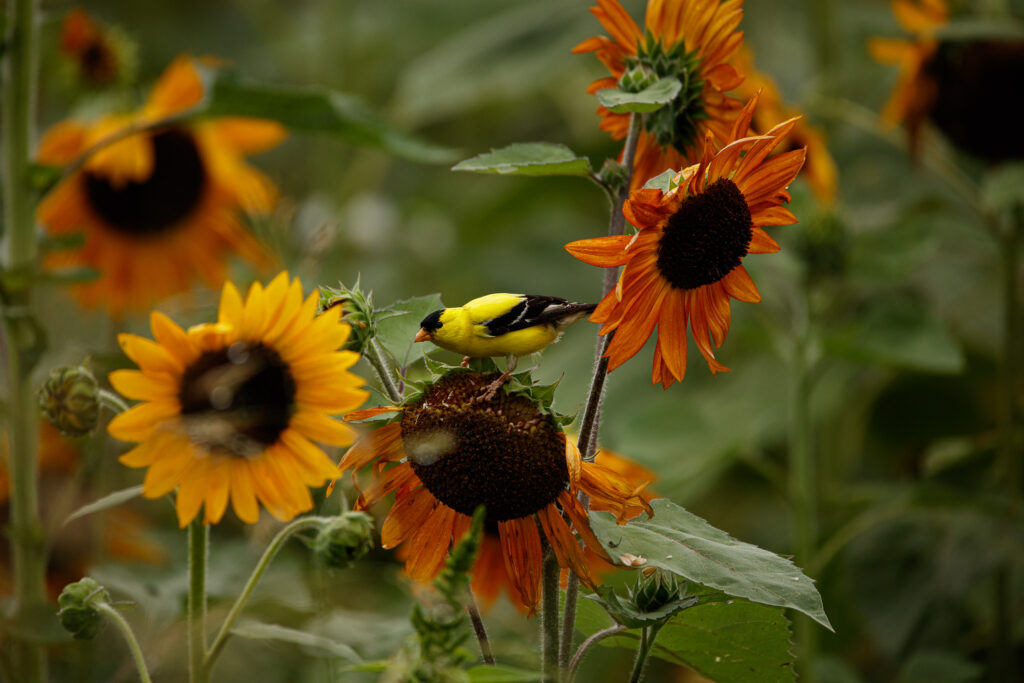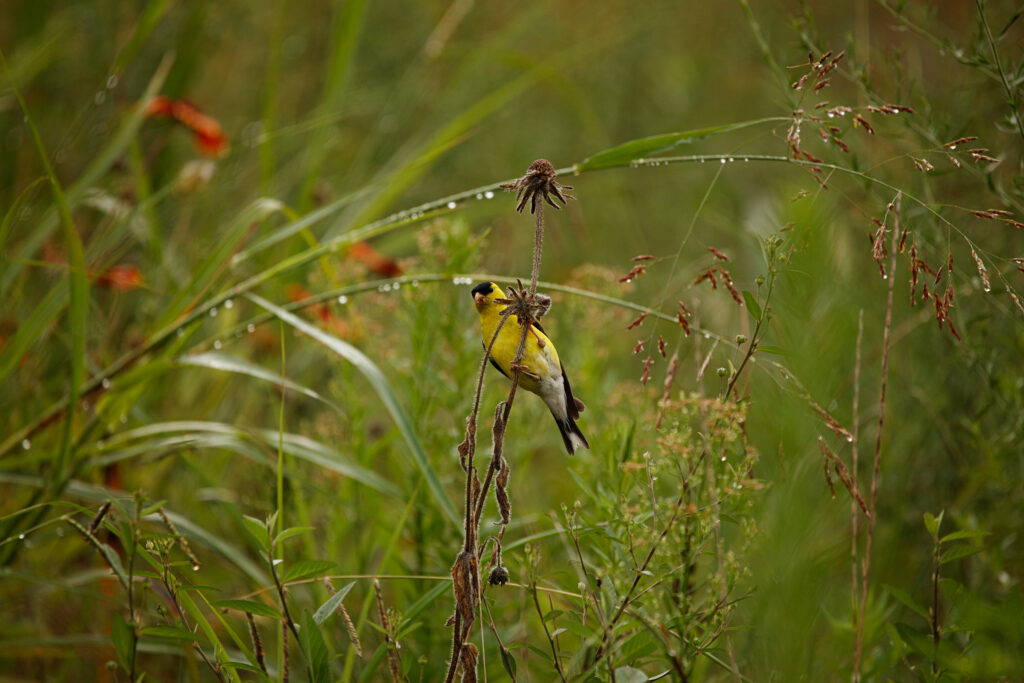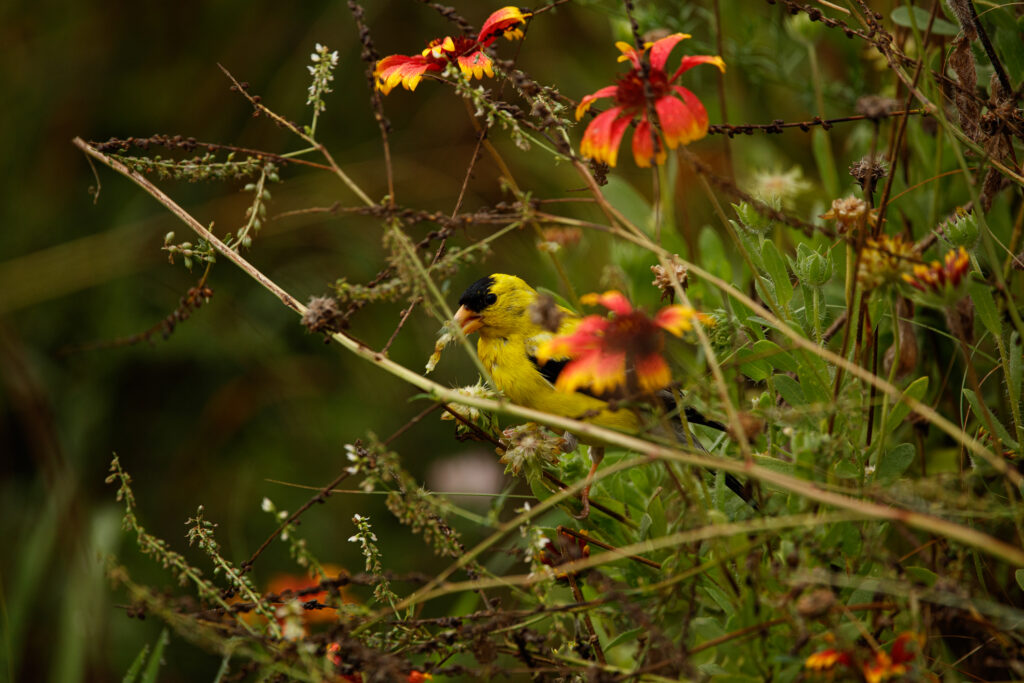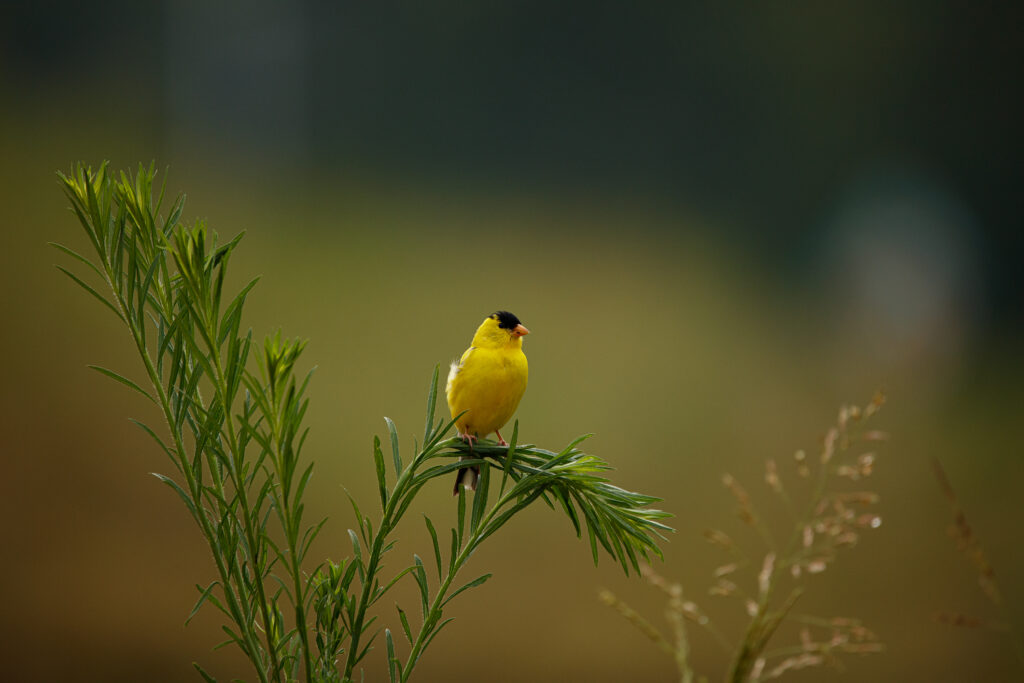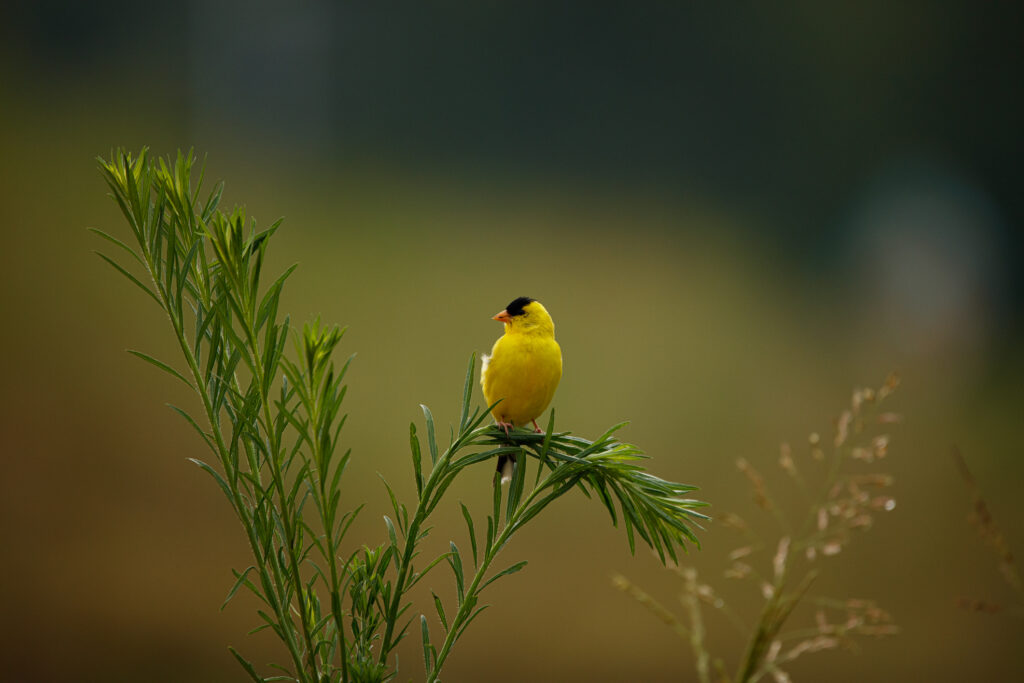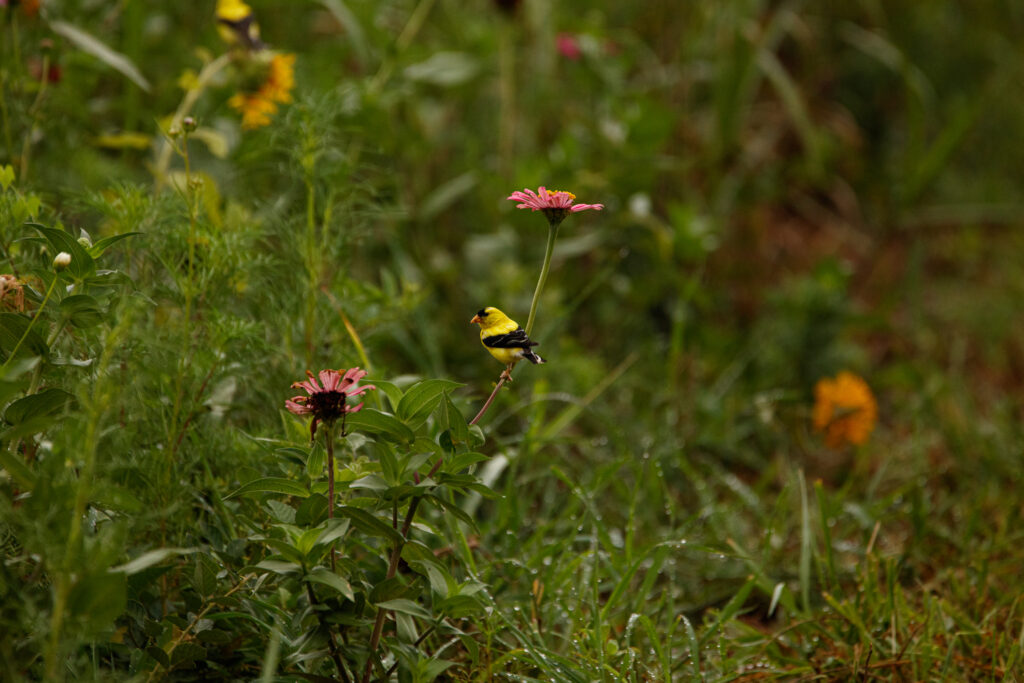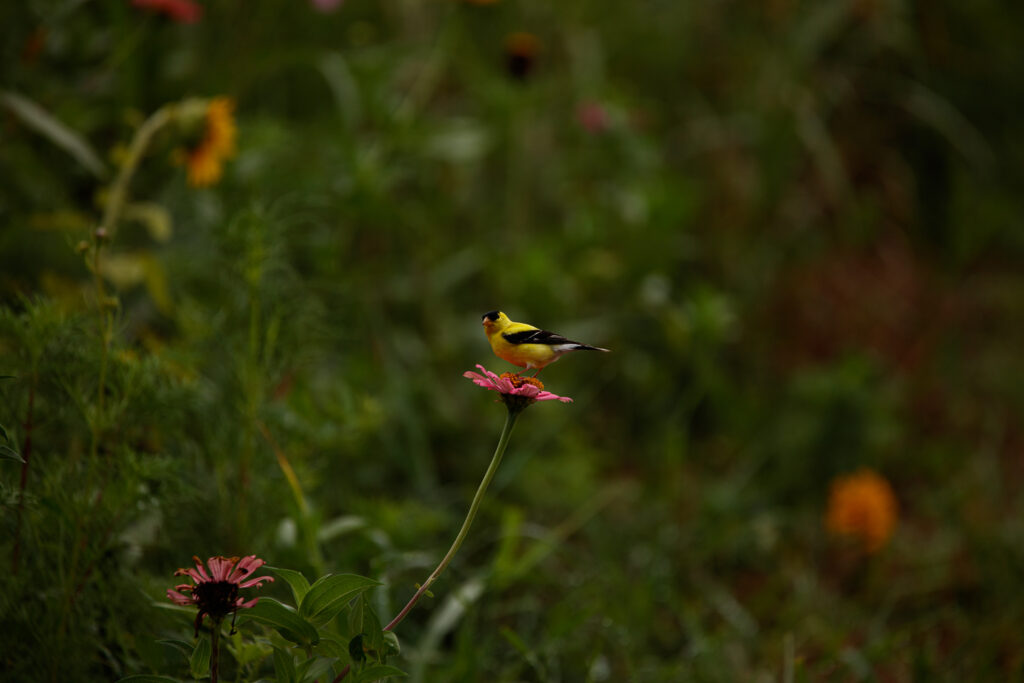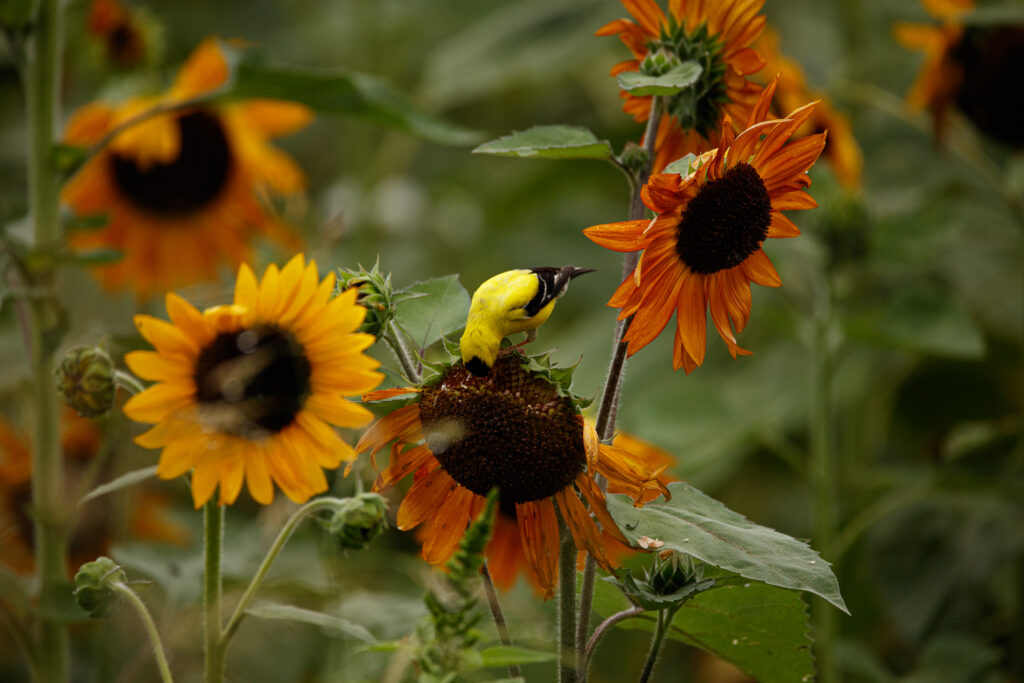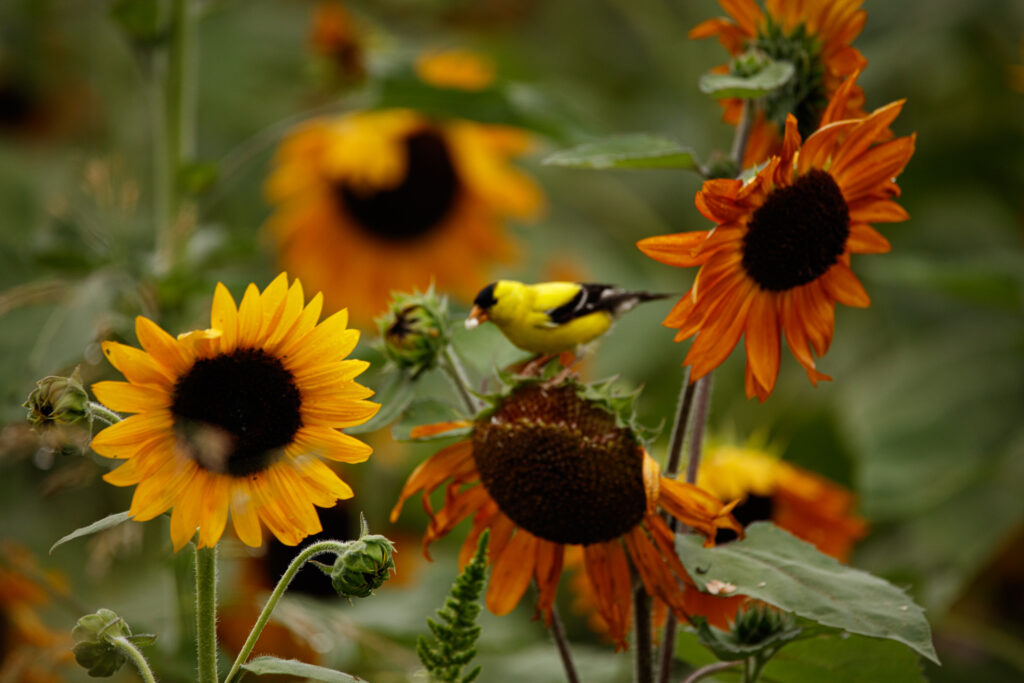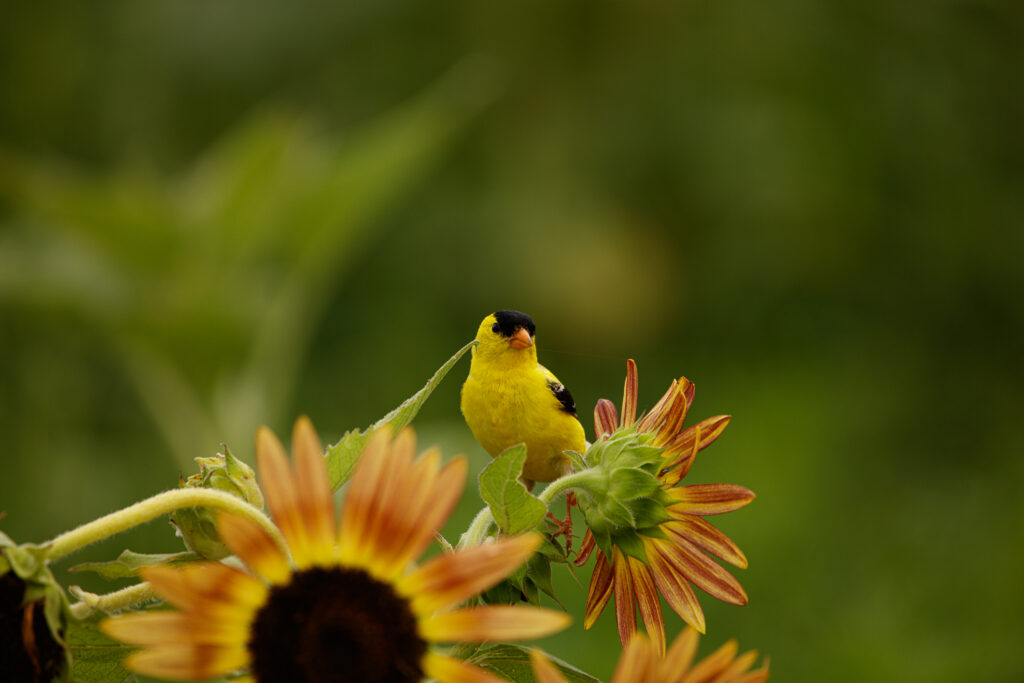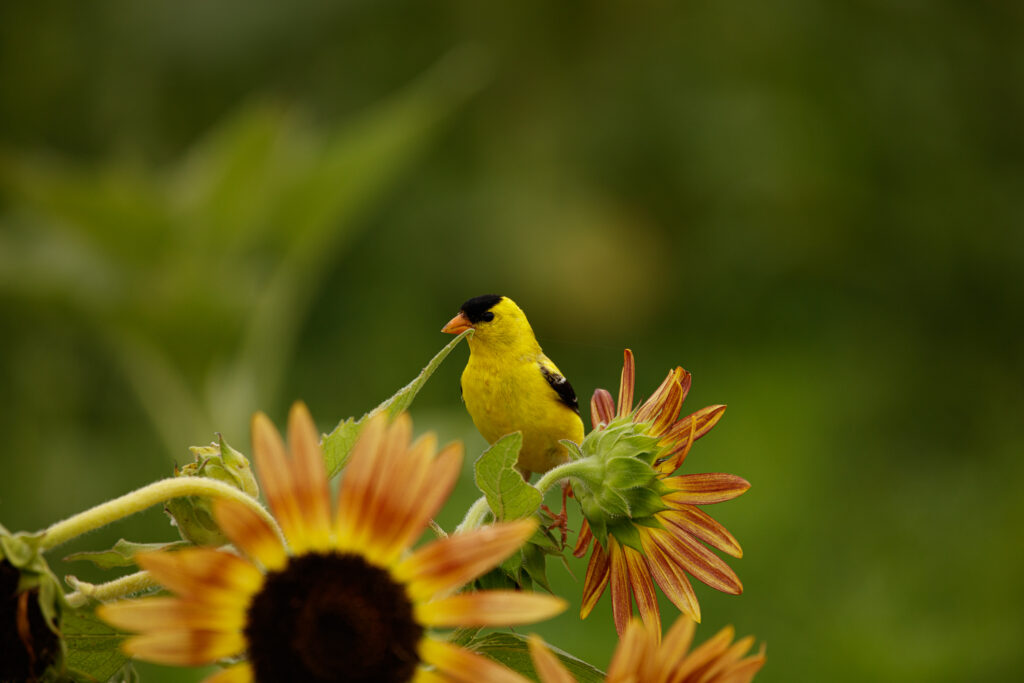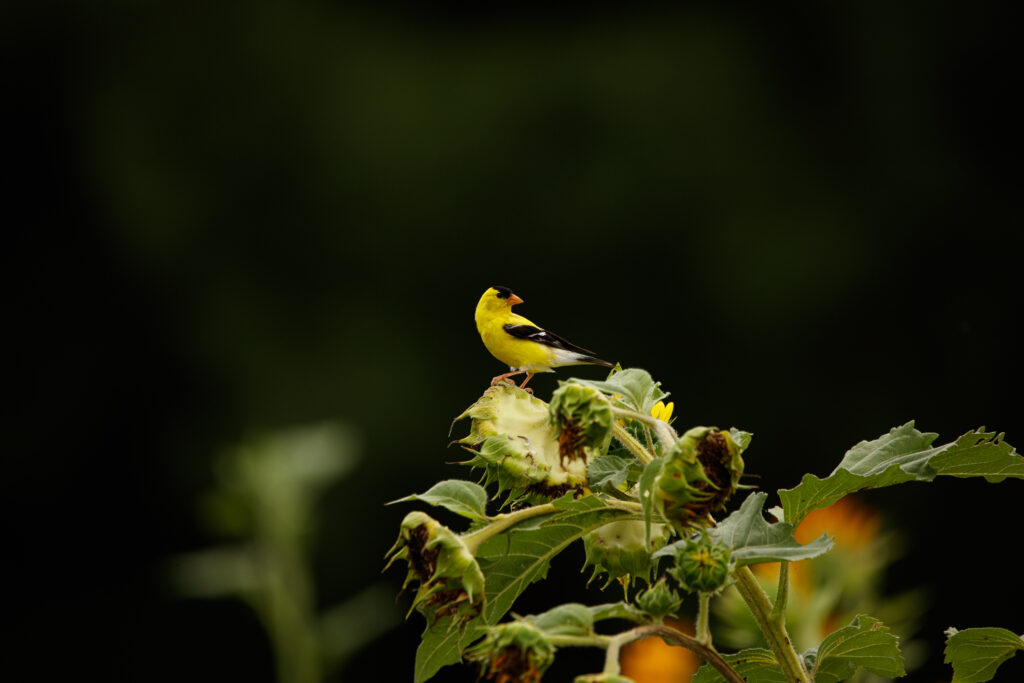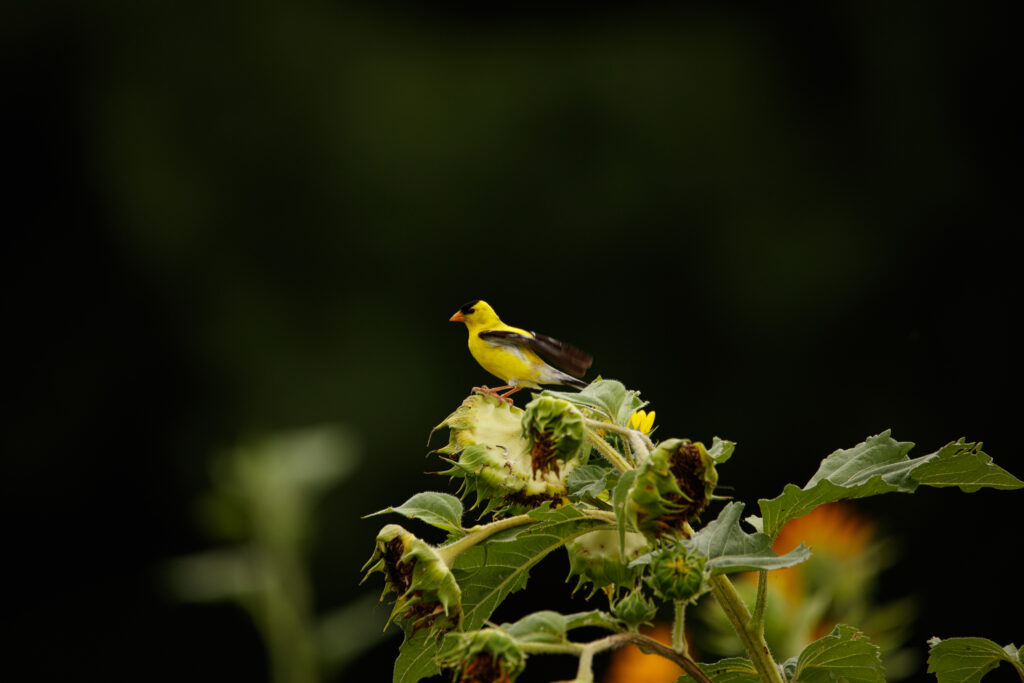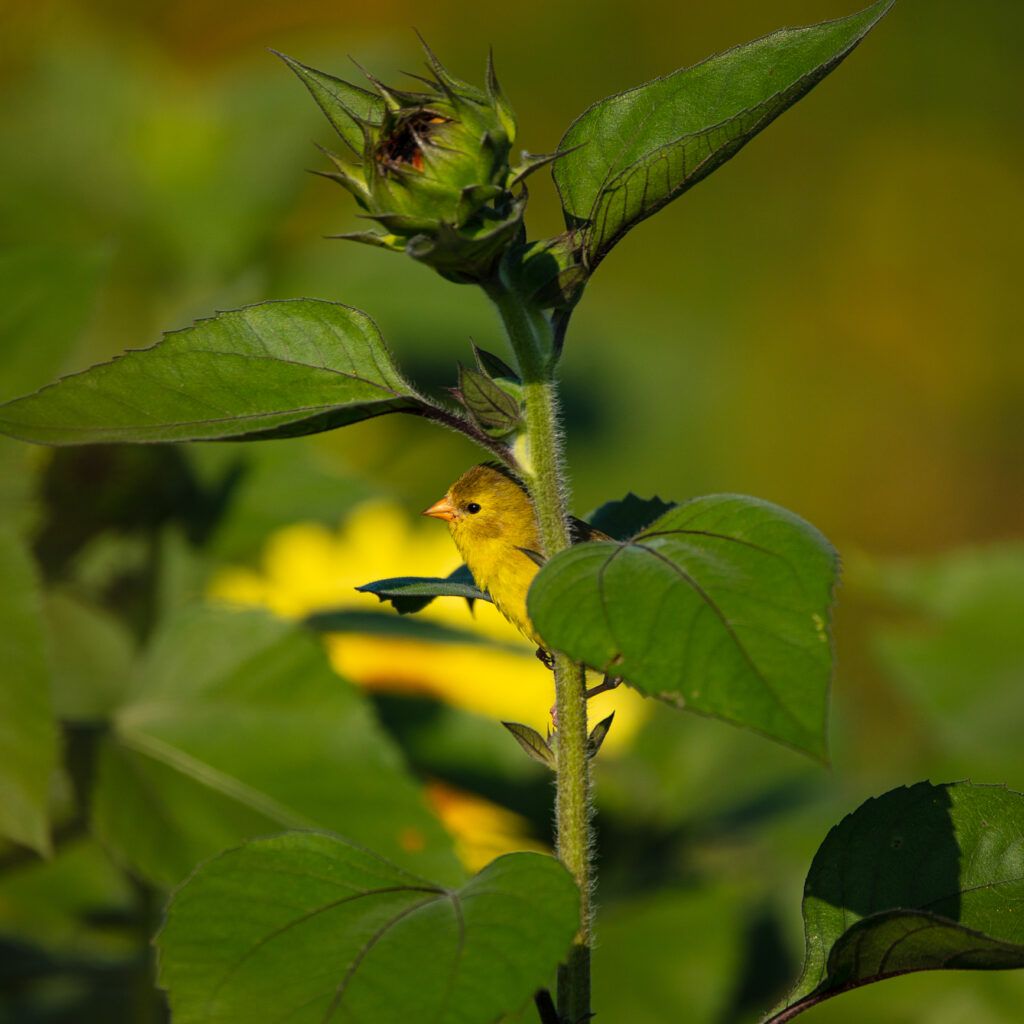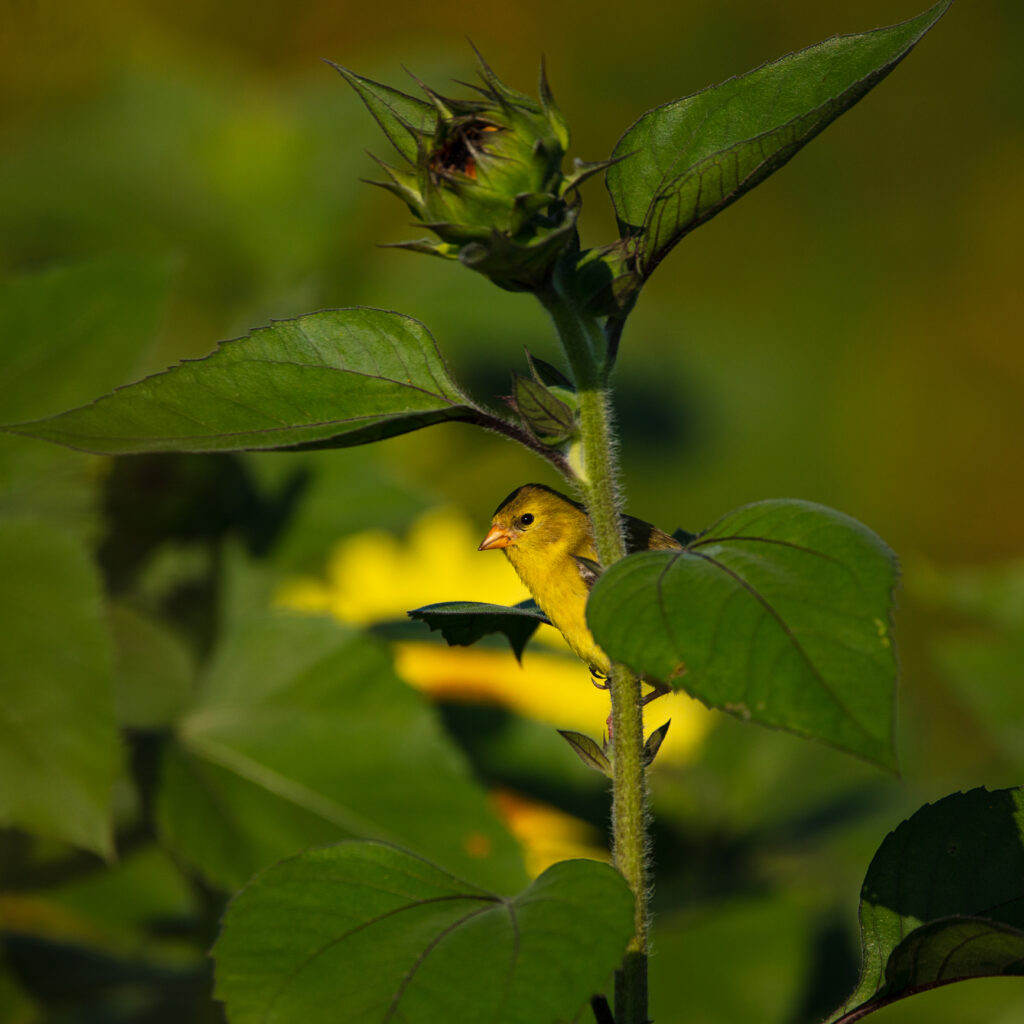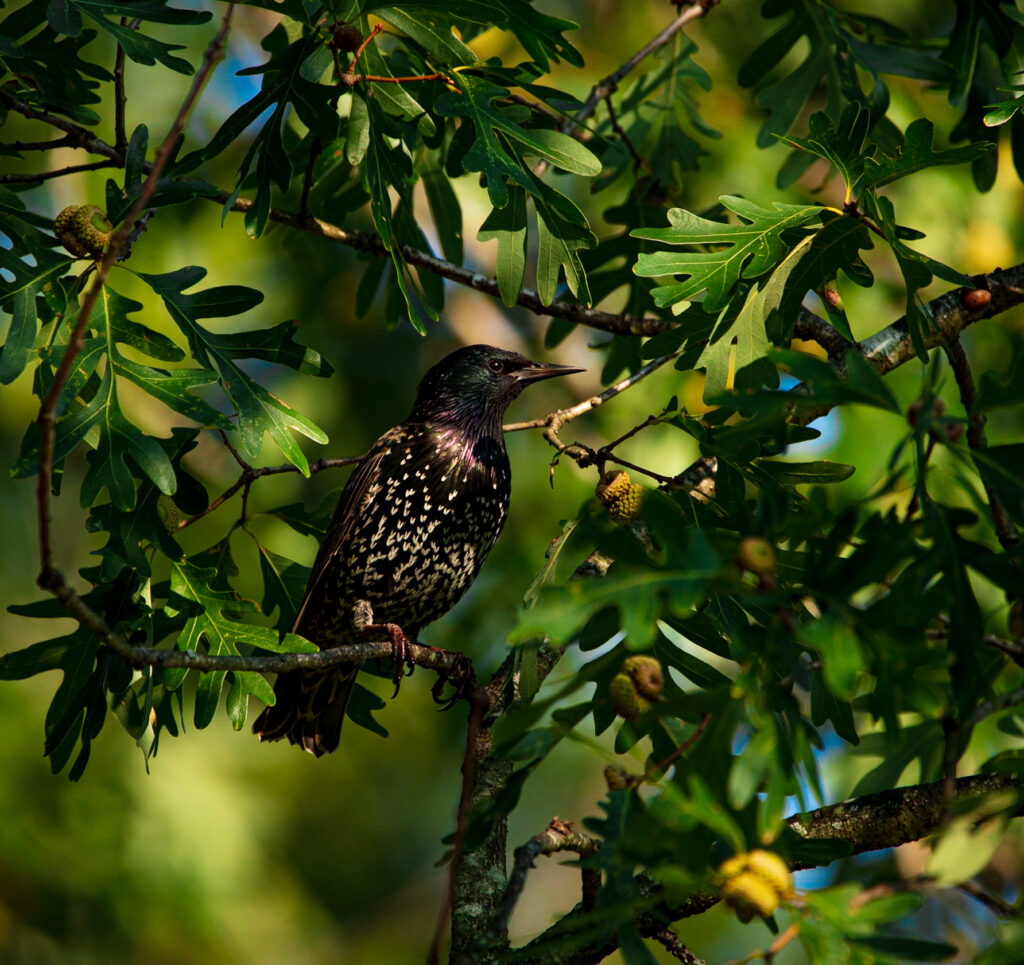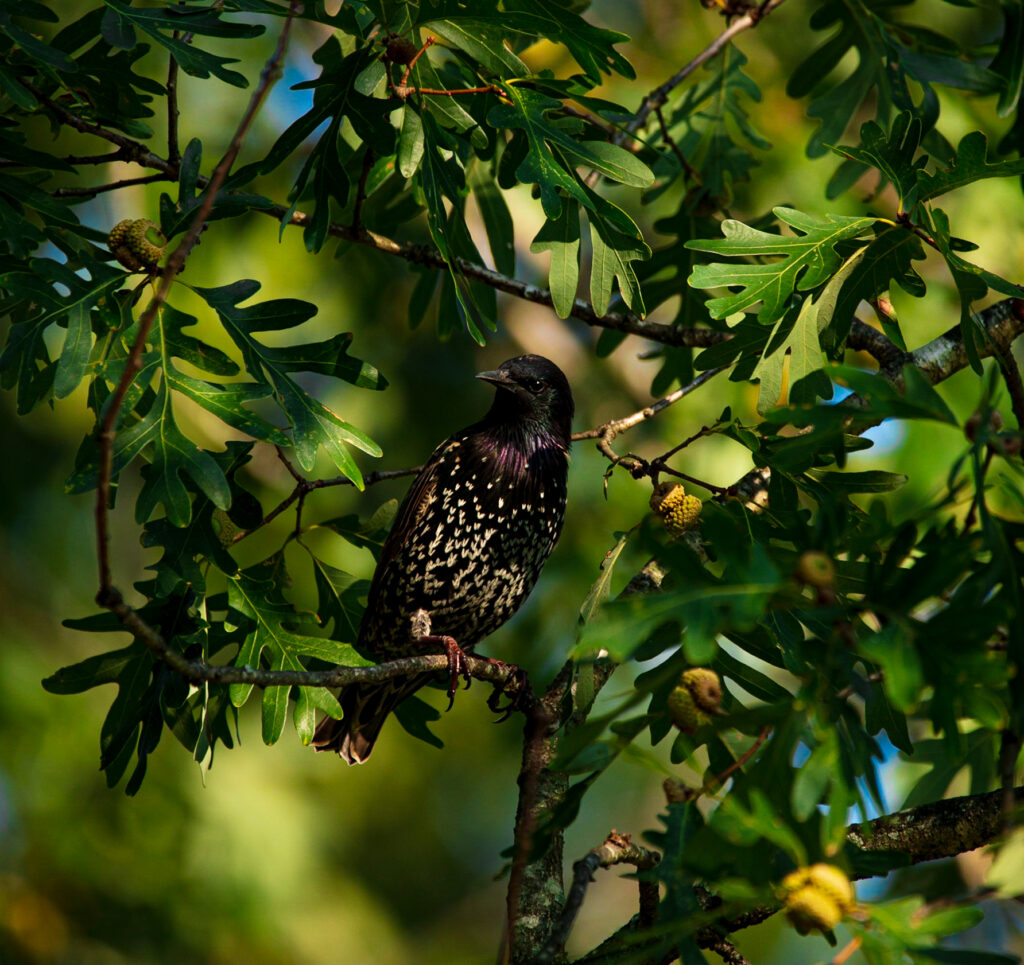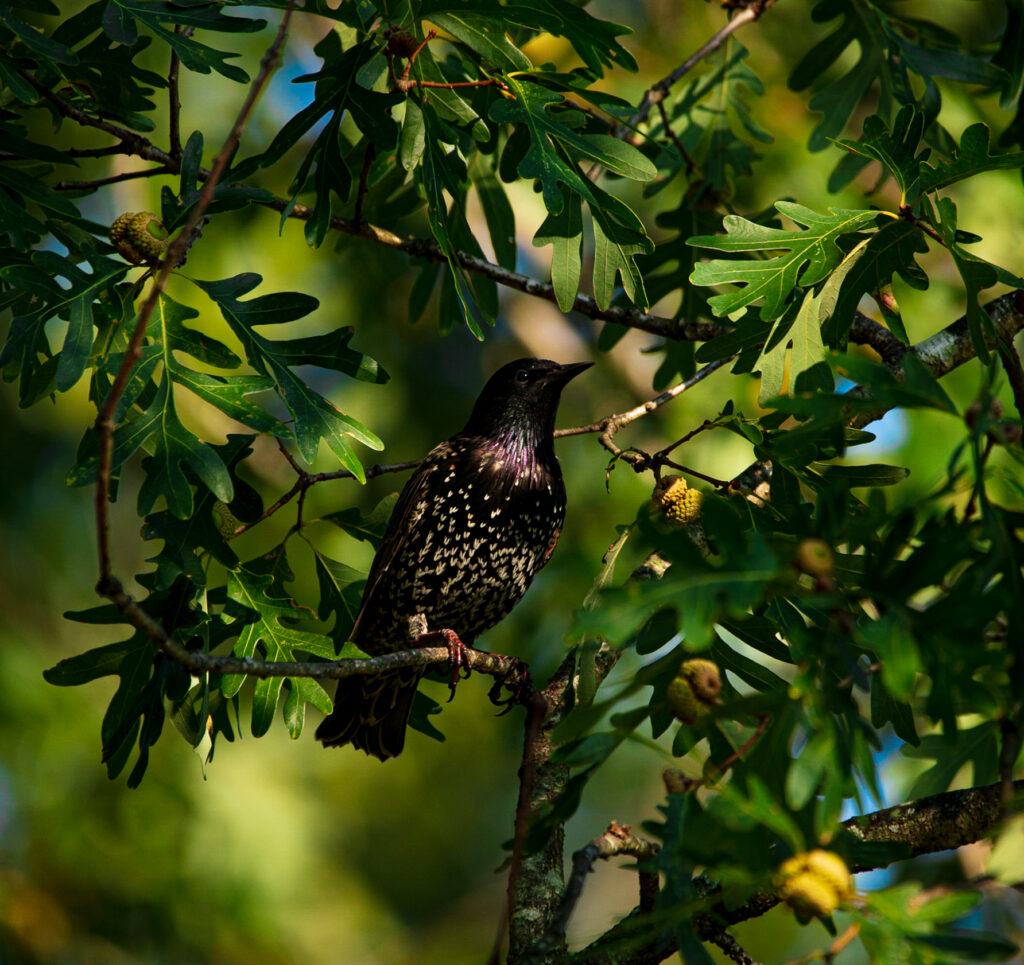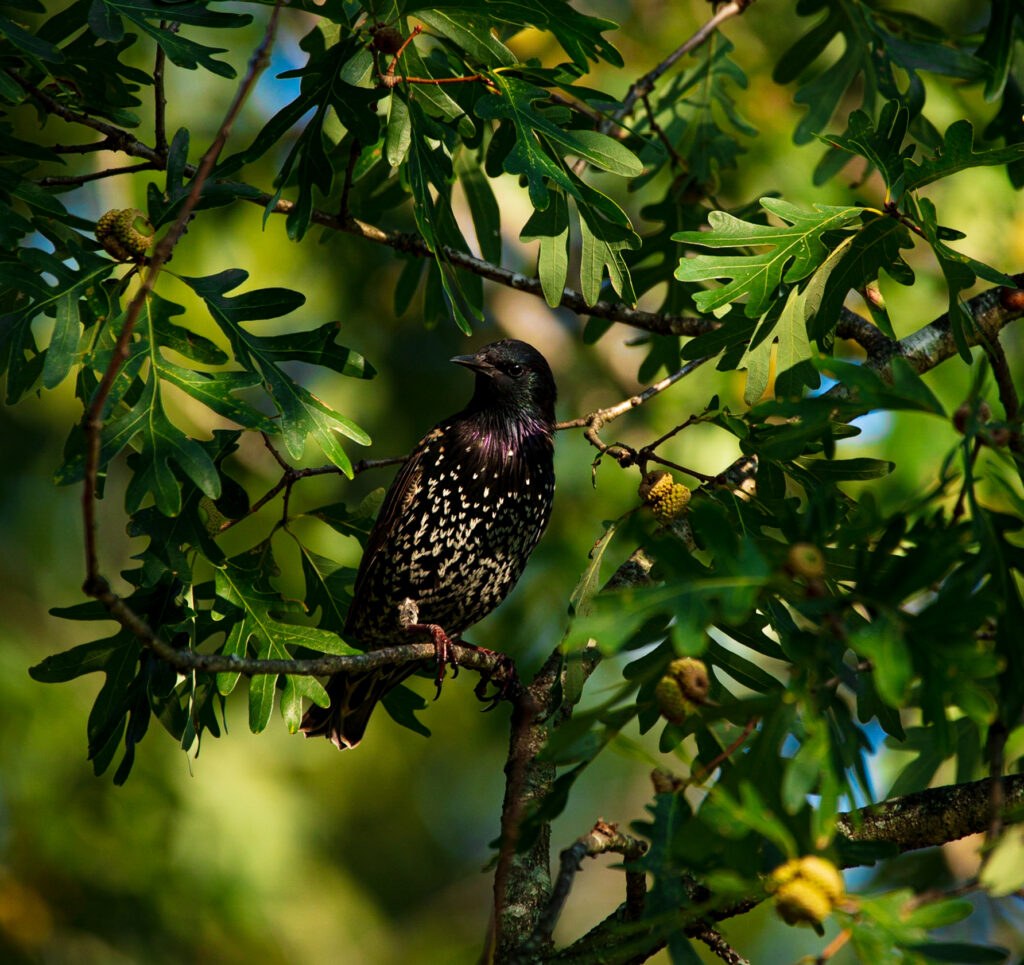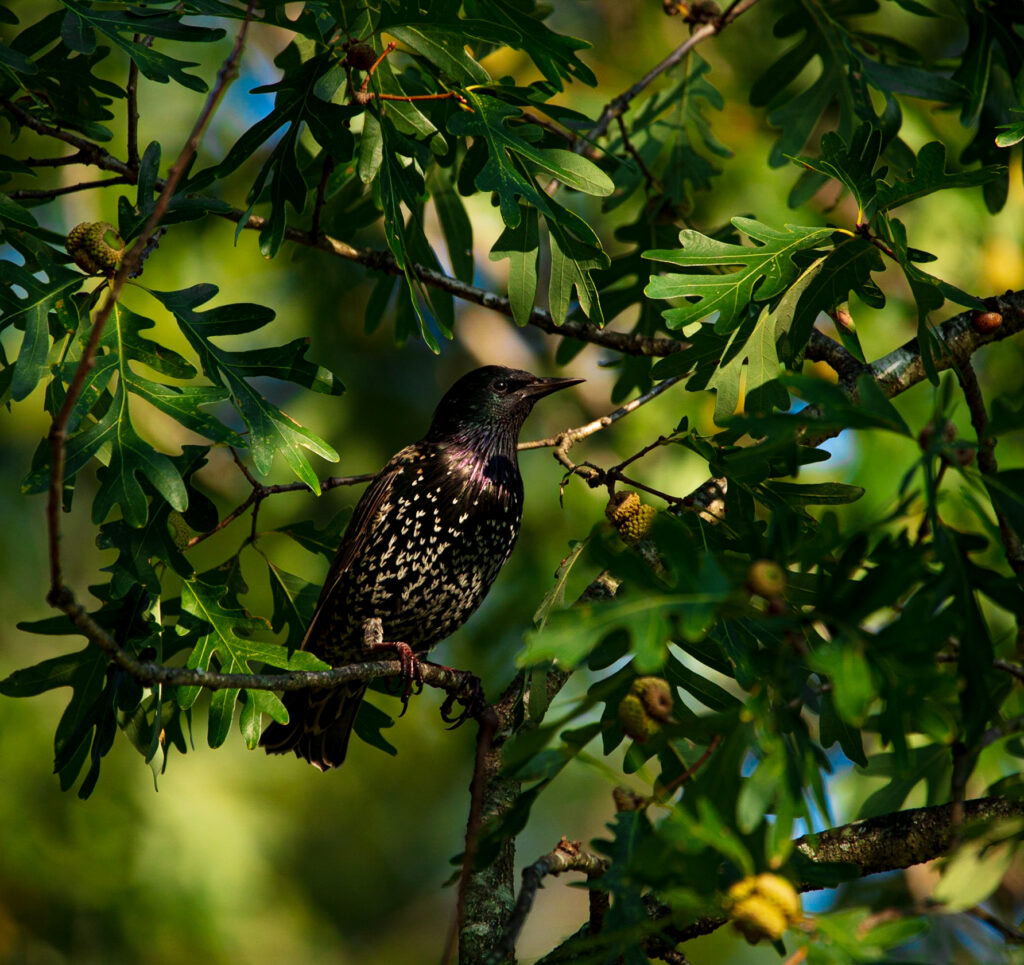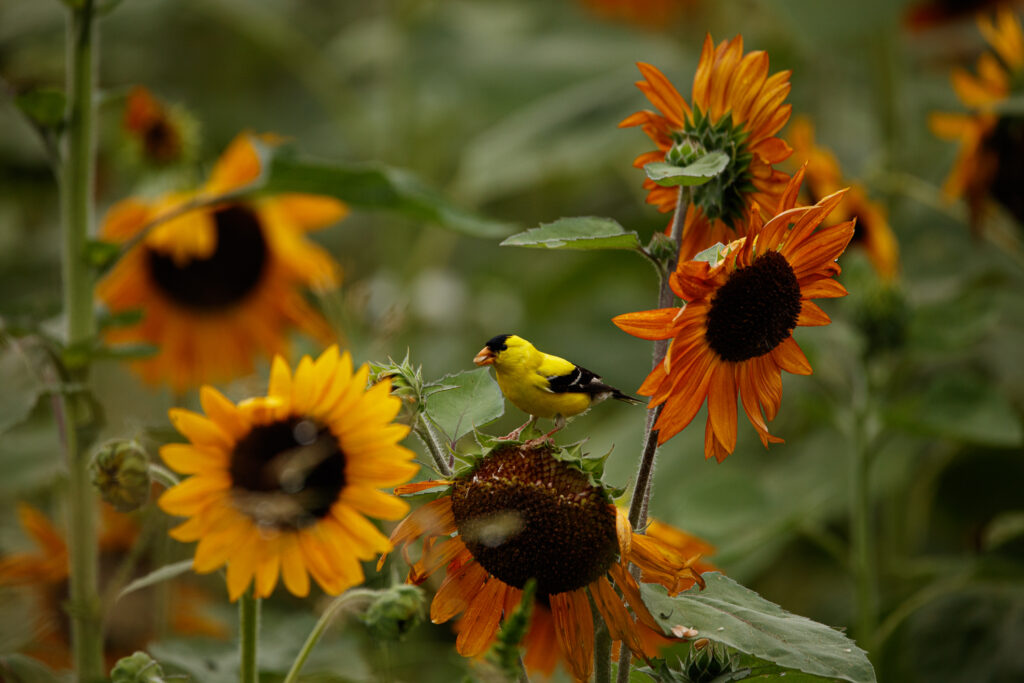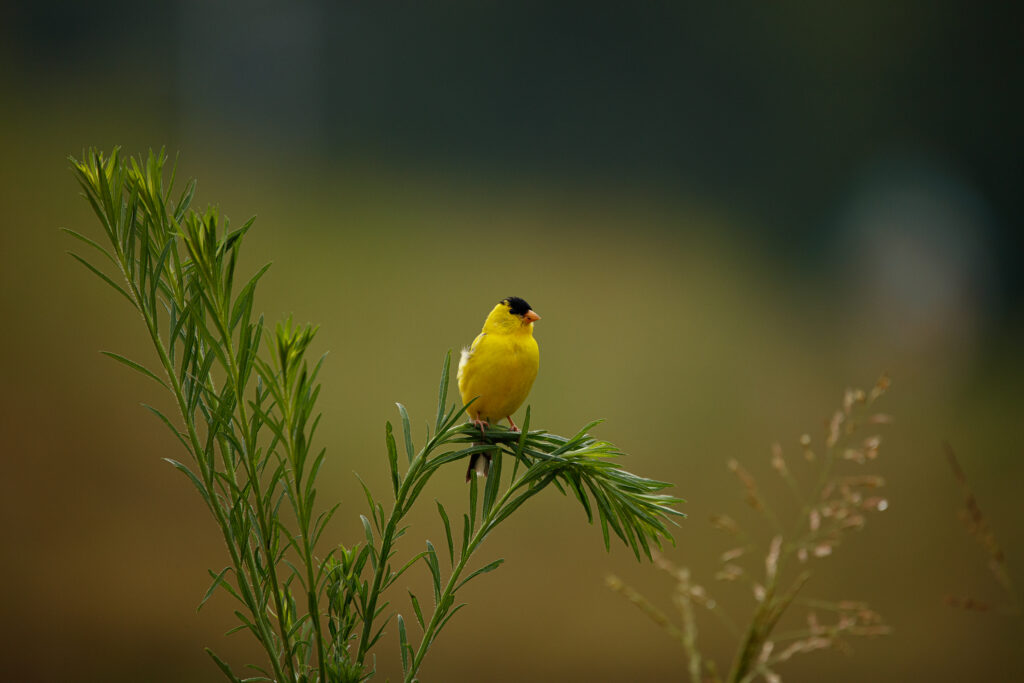Yesterday, I decided to make a quick trip to the sunflower field at the North Carolina Museum of Art to see what was in the area after the remnants of tropical depression Sally passed over.
It was still sprinkling lightly as I pulled into the parking lot and I briefly considered waiting in the car for the rain to stop. Then I decided that this was probably the best time to be out here because the less than stellar weather conditions would deter other people from arriving, thus I’d have the Art Park mostly to myself.

Walking down the grassy hill, I could hear the sounds of happy birds from quite a distance. By the time I reached the sunflower field, I now understood what the feathered ruckus was about.
The plants were looking brown and faded but there were a ton of American Goldfinches feeding on the bounty of seeds still enshrined within the sunflower’s wilted heads!
One of my favorite moments was watching this male Goldfinch feeding one of his youngsters. The “little” (ok he was big lol) one was cheeping for a meal every 10 seconds and kept his Dad on the run for a refill of seeds.
They were not alone though…
This was but one scene repeated throughout the entire field, as scores of dutiful parents scrambled to feed their brood. It was really neat to see so many of these birds all in one place!
Interestingly, this beautiful little finch breeds far later that most of our songbirds.
The peak of goldfinch nesting occurs July through August and can even stretch into early September.
But why though?
This unusually late nesting season coincides with the time that our native thistle flowers will have matured and donned their characteristic soft white down. The thistle is particularly important to the American Goldfinch because the birds eat the seeds and line their nest with the down.
Pretty cool, huh?!
PS. Rainy days rock for bird photography. Cloudy, diffused light is awesome plus raindrops look cool in photos 🙂
Photos by @sally_siko of @birdwatching_nc on the fabulous full frame SLR, the @canonusa
#5Ds


